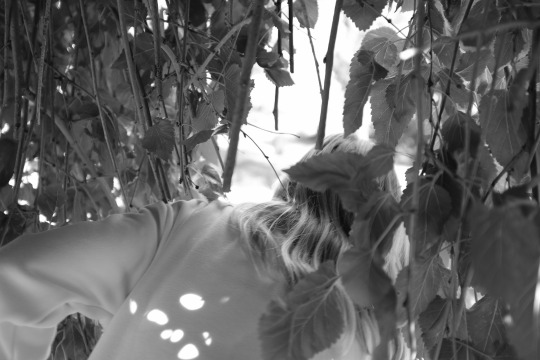#morus alba
Photo


ANATOMY OF A TREE PART II: MORUS ALBA K. Cináed Cahill
TEXT ID: ME: Do you remember when we planted you here?
MULBERRY TREE: Of course. We were both very young, barely sprouted.
M: I begged my mother to let you live. Pleaded with her to plant you somewhere else.
T: You cried to her about it.
M: I did.
T: Why? I was only a weed then. You've plucked plenty of weeds.
M: It felt unfair. We'd left you for years, and we tear up your roots just as you're really starting to grow?
T: It happens.
M: But I had control over it. I had a choice.
T: You were a child.
M: And you were a weed. I wanted to let you grow.
M: Are you happy?
T: What do you mean?
M: Are you happy? Do you enjoy your existence? Are you glad you got a chance to truly grow?
T: Of course. Life is always a precious thing, the chance to grow is a rare one. I am always happy for it.
M: The neighbors cut down another tree.
T: This upsets you.
M: It doesn't upset you?
T: I am a tree, very little upsets me.
M: I wish they would stop cutting them down. They were beautiful. They were healthy. A family of falcons lived in that pine.
T: That is unfortunate.
M: It feels too empty now. I'm not sure I like seeing so much of the sky unobstructed.
T: You want me to be upset about the trees.
M: I do.
T: Why?
M: It feels like something to be upset about. It feels like I'm watching something important slip away. It feels like watching my mother tear up your roots.
T: You asked me if I was happy.
M: I needed to know if it was only sentiment. If I’m still just the child who cries about mowing over dandelions, or if it means anything.
T: It was kind. Does it have to be anything else? END ID
14 notes
·
View notes
Text
Munch Mulberries Much?
Tons of Dwarf ever bearing mulberries. Morus nigra are supposed to be the best tasting of the mulberries. If you look online, experts on mulberries say the dwarf ever bearing variety is not a nigra. So, even nurseries mislabel this tree. If you want the nitty gritty try this link.
These were sold to me as: “Dwarf everbearing morus nigra” the link above says that that is not correct: That…

View On WordPress
0 notes
Text
Munch Mulberries Much?
Tons of Dwarf ever bearing mulberries. Morus nigra are supposed to be the best tasting of the mulberries. If you look online, experts on mulberries say the dwarf ever bearing variety is not a nigra. So, even nurseries mislabel this tree. If you want the nitty gritty try this link.
These were sold to me as: “Dwarf everbearing morus nigra” the link above says that that is not correct: That…
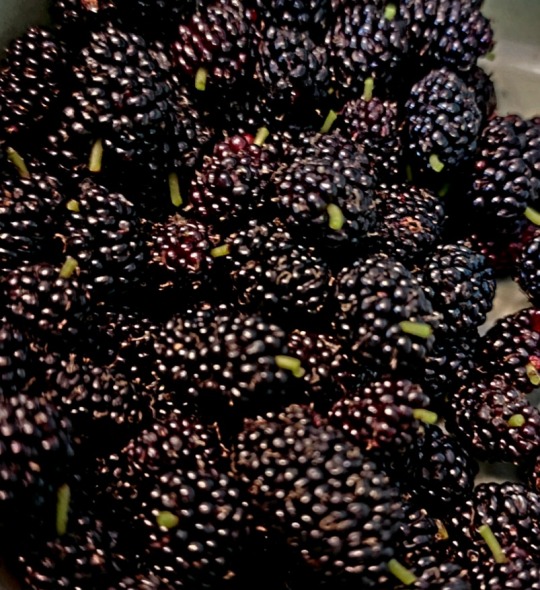
View On WordPress
0 notes
Text
Mulberries: Super Fruit
In the month of spring that is March, the mulberry trees are laden with both reddish black and white fruits. These berries are filled with nutrients rich fluids. The fruits have short life and tend to fall to the ground as soon as you shake the branches. The season span is very small about 25 days.
There are many trees in the forest near our home where I go daily and enjoy the berries packed…
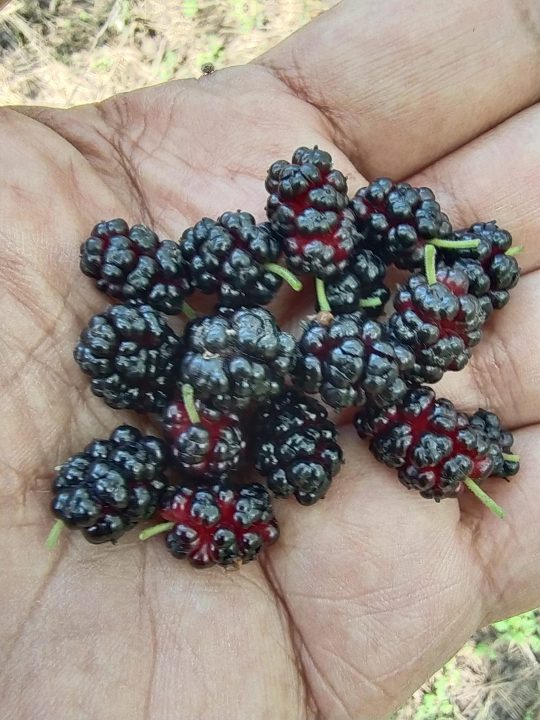
View On WordPress
#Anthocyanin#Antioxidant#cancer#carbohydrates#Common mulberries#Cyanidin#fiber#Fruits#Heart health#iron#LDL#Minerals#Morus Alba#Myricetin#Reddish black#Rutin#Seasonal fruit#Silkworms#Vitamin c#Vitamin E#Vitamin K#White varieties
0 notes
Text
Today’s Haiku with Picture-27

The roots remain
Spring of the 5th year
fruit Dodome
根は残り
5年目の春
ドドメ成る
The morus alba tree on the slope of the waterway was cut, but it has recovered to fruition again. Dodome=mulberry.
30.05.2022
3 notes
·
View notes
Text
herbal teas guide —
🌿🍃 having conversations with my mutuals all over the world, i was stunned to find out that not every country/culture practices drinking herbal teas for health issues. as a slavic person i decided to create this little guide because – and i'm saying this as a skeptical person who hates superstitions – they really work. 🌿🍃
mint tea (mentha piperita) is for digestion and relaxation
chamomile tea (matricaria chamomilla) is for digestive system
horsetail tea (equisetum arvense) is for skin, hair, nails condition, remineralization and circulatory system
linden tea (tilia cordata) is for a cold
lemon balm tea (melissa officinalis) is for relaxation and sleep
nettle tea (uritca dioica) is for urinary tract
sage tea (salvia officinalis) is for when your throat or teeth hurt
fennel tea (funiculum vulgare) is for digestive system
white mulberry tea (morus alba) is for carbohydrate metabolism
pansy tea (viola tricolor) is for clean skin and body detox
purge tea (cistus incanus) is for immunity
hawthorn tea (crataegus monogyna) is for heart and circulatory system
damian leaves tea (turnera diffusa) is for anxiety and libido
dandelion tea (taraxacum officinale) is for liver, stomach and digestion
st john's wort tea (hypericum perforatum) is for emotional balance, good mood, digestive system and kidney function
🌿🍃 to create this guide i was using a booklet from my pharmacy store. if you google them, you will find out that each of these have even more usage methods than the ones listed. 🍃🌿
🌿🍃 if you're from a different country/culture and you know more herbal teas like these, feel free to add them. 🍃🌿
#felt extra this evening but ive been planning to make it for a few weeks now#posted by me#slavic#polish#poland#herbs#herbal#organic#health and wellness#tea#guide
149 notes
·
View notes
Text
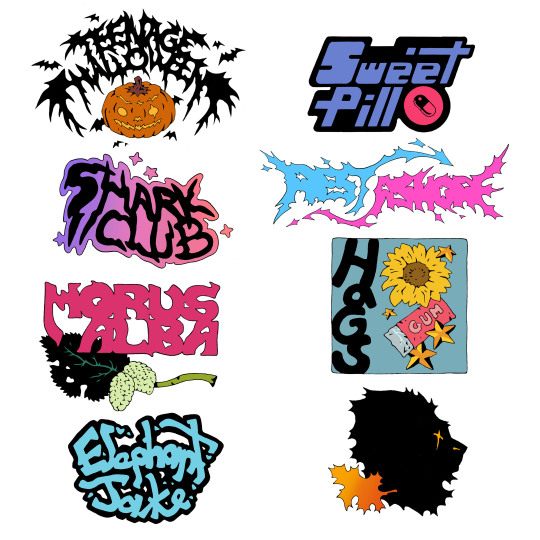

For the last couple weeks I've been drawing logos / designs for local-ish (mostly NJ, some PA and NY) bands as warmups in the morning. Here's what I've come up with! Massive post below the break explaining each logo + where to find each band and listen to their music.
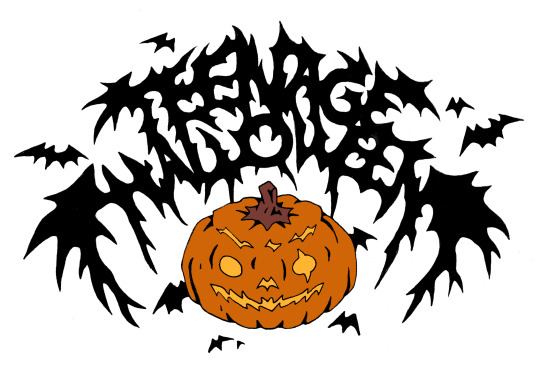
Teenage Halloween- a staple of New Jersey basements for probably about a decade now and finally getting wider recognition in the last couple years. Pop punk / power pop with a killer horn section. First time I saw them was in New Brunswick playing with Walter Etc. and Blowout. They played a killer cover "Build Me Up Buttercup" and my wife got a black eye in the pit. Recommended tracks: "Brain Song," "666," "Clarity." Their first EP is on a separate bandcamp page btw, check it out here it's great.
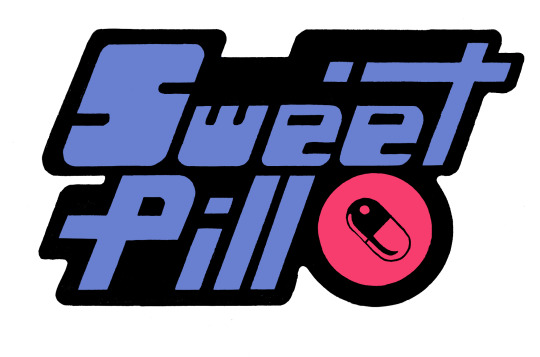
Sweet Pill - They will call themselves a Philly band but in my heart they'll always be from Glassboro. Definitely one of the more recognizable names on this list. Emo revival - early stuff is more twinkly, more recent stuff is heavier. All of it's great. Recommended tracks "Nephew," "High Hopes."

Shark Club - Central Jersey's finest. I'm very biased because I actually know these dudes and they did the music for my wedding. Some of the best pop punk you'll hear and the nicest people you'll meet. Recommended tracks: "Game Theory," "Bill Murray," "Heavens to Betsy."
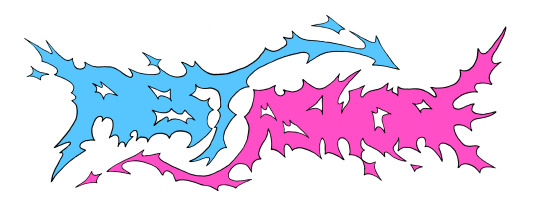
Rest Ashore - My favorite band for the last (oh God I'm old now) eight years. From gut-wrenching emo ballads to virtuoso math-rock instrumentals they do it all. One time I got to sing vocals on "Lucy's Theme" at a house show- thank you Erica! Recommended tracks: "Hjarta," "Chinese Opera," "Devotion," "Soyuz Sweetheart." Too many bangers to name honestly, just deep dive their discography.
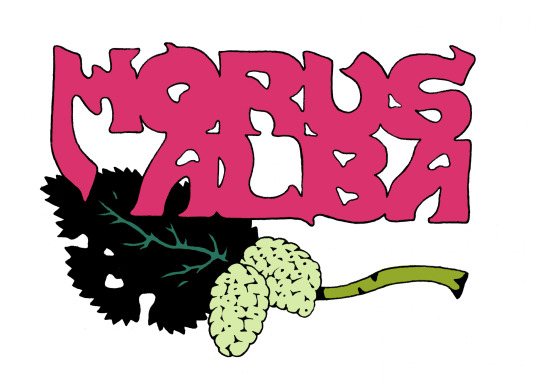
Morus Alba - First band I ever went to see at a house show and still one of my absolute favorites. Their music feels like the bridge between the best pitchfork, /mu/ alt rock bands and high energy basement emo. I mean that as a compliment and I hope it comes off as one lol. I should note that since 2019 Morus Alba has morphed from a band into an experimental hip-hop project so later releases sound radically different and basically disconnected from the earlier stuff. Also my favorite release from them, Live at Isabelle's, has been scrubbed from the internet but if you'd like the files just email me. Recommended tracks: "Skyscraper," "Human Resources," "The Goodnight Waltz."
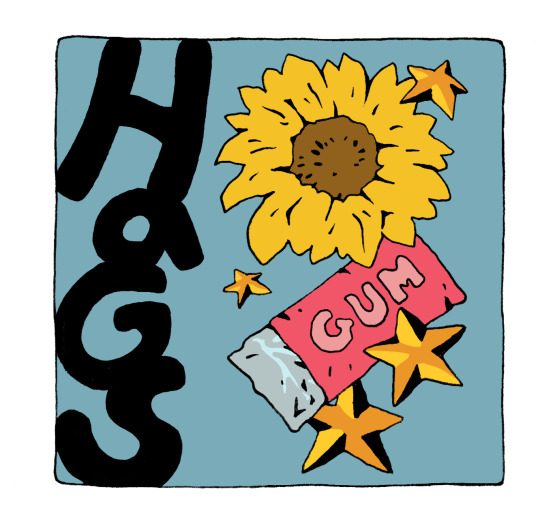
Have a Good Season - another Jersey mainstay that's still going strong. Emo revival in their earlier releases, now with more 70s power pop influences in their newer stuff. See them live, they put on a fantastic show and usually play some great covers in addition to their original music. HaGS guys if you're reading this, please put your version of "Since You've Been Gone" online, I'm begging you. Recommended tracks: "Joseph / Shel Silverstein," (you have to listen to them together for the drop, so good) , "Gum, "Gleaux / Scab." Also, frontman Nic Palermo interviewed me once.

Elephant Jake - If you see any of these bands live make it EJ, they put on such a damn good show. Electrifying indie punk from the Empire State. Recommended tracks: "F.D.C." "Sarah Moyer," "Goodness to Honest," and of course you gotta learn "Sebastien Bauer" for the singalongs.
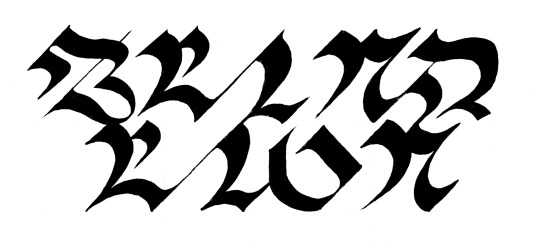

Blind Lion - Sadly one of the greats that we lost along the way. Defunct since about 2017. I only got to see them once but it was a great performance. Alongside their own stuff they played some killer covers of "Bad Moon Rising" and "Moonage Daydream." I had trouble doing a logo design for them because I actually really like the composition, if not the "Ed Hardy-ness," of their existing logo so what you see here are two separate attempts, neither of which feels entirely satisfying to me. Frontperson Larry Flately currently plays in Nematode and also handled production of Bradley Gardens joke hiphop group The Breakfast Boiz under the moniker "DJ Ova EZ." Recommended tracks: "Brumous," "Dinner."

Fighting Seasons - A band that I sadly found out about too late (via a sticker under the bridge in my town which has since been painted over). 2010s pop punk that packs a helluva punch, especially considering that I'm pretty sure the members were high schoolers for most of the band's existence. I think some members may have gone on to form Sawce (FFO Chon, Polyphia, that type of music) but I can't remember where I read/heard that so ¯\_(ツ)_/¯. Recommended tracks: "Fighting Seasons," "Oil on Canvas"
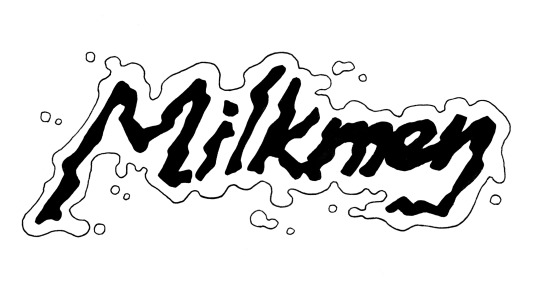
Milkmen- Another fallen giant, officially disbanded in 2019. Like Morus Alba, they played the very first house show I attended and their few releases remain on constant rotation in my home. Used to put on a great show and were one of the bands I always thought would make it big until suddenly they weren't around anymore. Frontman Ben Thieberger contributed guitar and vocals to Covid quarantine project Kin if you're looking for a bit of an extra fix but beyond that I don't know what these guys are up to these days, sadly. Recommended tracks: "Ramus," "Johnny Dangerously," "how sieves catch breeze," "K.O.T.H."

Stand and Wave - New York (now Philly) pop punkers delivering instant dopamine hits with every track. Another great live act, see them with EJ if you can! They often play shows together. Recommended tracks: "Convos," "Mrs. Dash," "Splashton Kutcher," "Michael Collins."


My Chemical Romance - You know who they are. While I was drawing all these other logos I ran a poll on Patreon to decide which famous New Jersey band should also be graced with a drawing from me. MCR won the poll by a hefty margin so unfortunately you won't get to see me do an illegible black metal take on Hoboken's Yo La Tengo. I ended up doing two versions: the one with the halo is the first, the one with the bats was the second. I tried to do something kind of thin and elegant with the first one and I don't think it's terrible but I also wasn't quite satisfied with it. For the 2nd attempt I tried to lean into the kind of pulpy, almost horror punk aesthetic of early MCR and I think that one looks better even if it's less original.
Anyway if you took the time to read through all this, thank you very much! And please support these bands! Also If any of the links aren't working please let me know.
-Logan
441 notes
·
View notes
Text
Growing foxtial millet, QMYS Section 3, Part 1
Continuing the Qimin yaoshu齊民要術 (“Essential Techniques for the Common People) by Jia Sixie (fl. c. 540). Advice for growing foxtail millet. Due to the length of this section, the translation will be divided into several posts. This post covers the introductionary dictionary definitions and Jia Sixie's own advice. Subsequent posts will cover the extensive quotations from earlier works.
[Translator's preface]
After opening the book with two general sections on tilling the fields and selecting seed grain, sections 3-54 cover the cultivation of specific plants (field crops, vegetables, fruit- and timber-trees, dye plants). The first, and lengthiest, of these is dedicated to the foxtail millet (Setaria italica). Known under many names, in Jia Sixie's home region it was often simply referred to as gu穀, “grain”. I suppose you could draw parallel to calling maize “corn” in English. Foxtail millet was first domesticated in North China during the Neolithic and remained the main staple crop there during the Early Medieval North China, . As such, by the time QMYS was written, Jia Sixie could draw on several millennia of experience with foxtail millet farming.


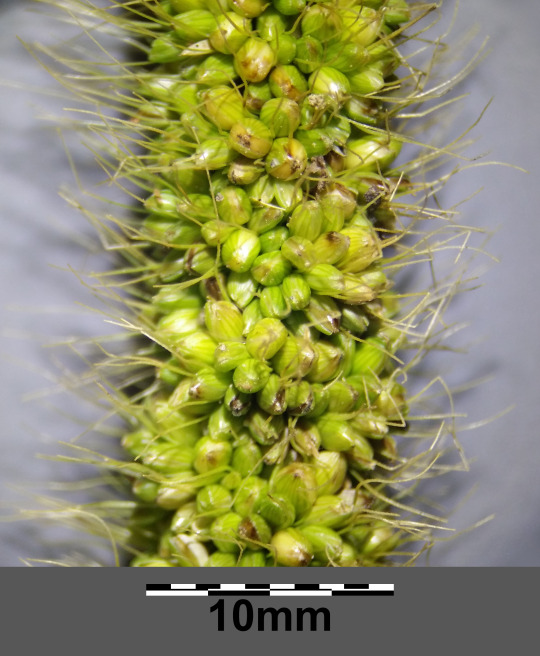
[Other plants mentioned]
Certain other plants are mentioned more incidental in this section.
Plants more or less suited to precede foxtail millet in a crop rotation system:
Mung beans or green gram (Vigna radiata), lüdou緑豆 (lit. "green beans"), used as green manure in crop rotation with millet.

Adzuki beans (Vigna angularis), xiaodou小豆 (lit. "small beans") served a similar function.
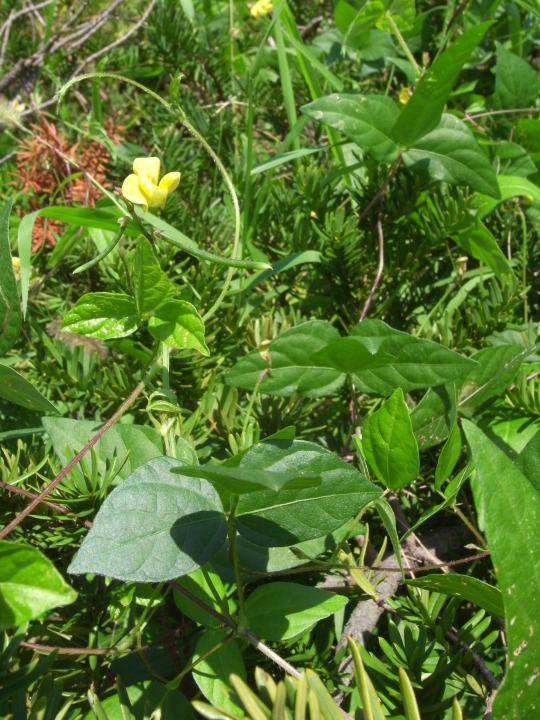
Hemp (Cannabis sativa), ma麻, grown both for textiles and oil

Broomcorn millet (Panicum miliaceum), shu黍, popular for brewing millet beer

Sesame (Sesamum indicum), huma胡麻 (lit. “foreign hemp”), considered the best oilseed crop

Turnip (Brassica rapa var. rapa),wujin蕪菁, leaves and roots are edible, and the seeds can be pressed for oil.

Soybean (Glycine max) dadou大豆 (lit. “large beans”), used as fodder or famine crop, but also fermented into sauces, etc.
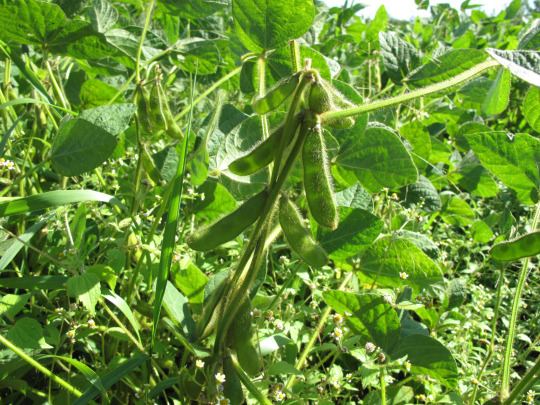
Gua底 is a general term for gourds and melons
Trees whose leaves and flowers can be used to predict the best time for sowing foxtail millet:
Beiyang菩楊 appear to refer to some kind of willow (Salix) or poplar (Populus)

Peach (Prunus persica), tao 桃

Jujube (Ziziphus jujube), zao棗
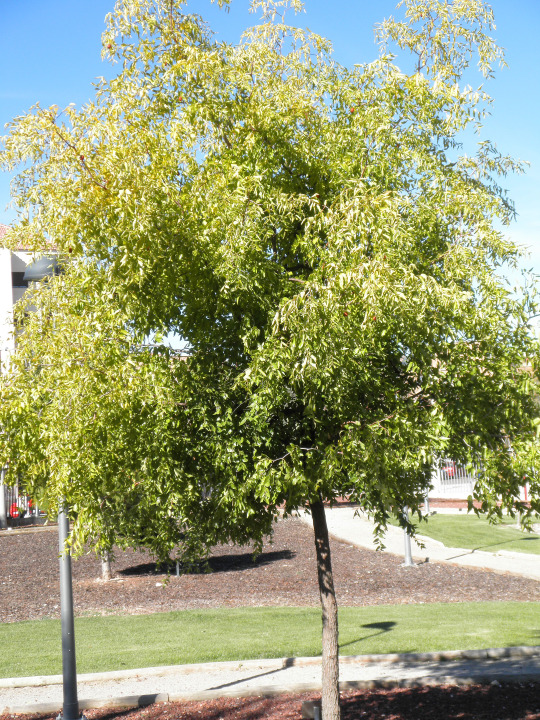
Mulberry (Morus alba), sang桑

[Tools]
The illustrations below are taken from Wang Zhen's王禎 (1271-1333) Nongshu農書, who of course wrote several centuries after Jia Shixie. While many tools were essentially timeless and in continuous use up to the modern age, developments did happen, and also terminology could change.
The preferred tool for sowing was the seed drill, lou耬
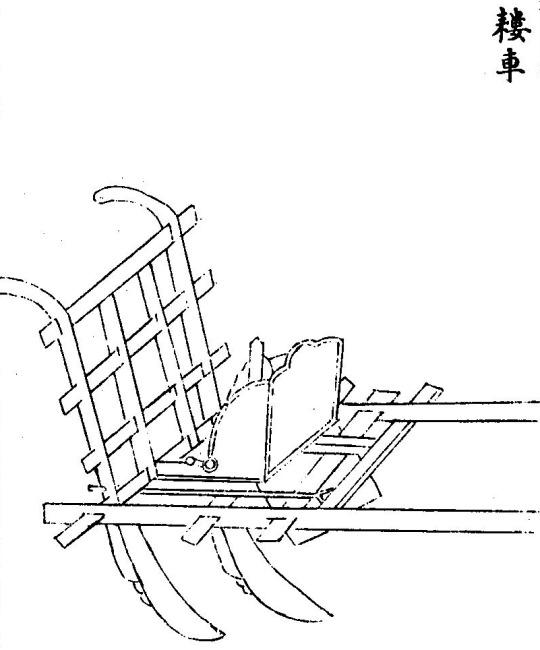
(Wang Zhen's louche耬車).
The “beater”, ta撻, (for a lack of a better translation) was pulled over the furrows after sowing to compact them. Wang Zhen describes this tool as a bunch of branches weighed down by stones.
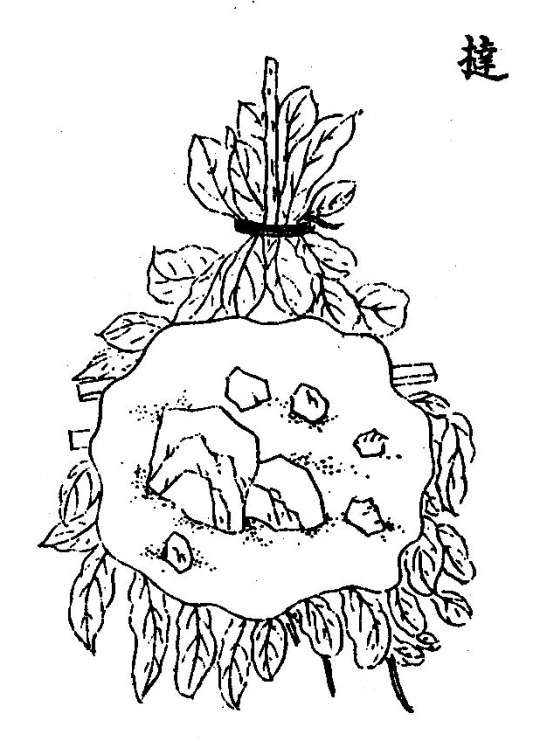
The arrowhead hoe, zuchuo鏃鋤 was a small, pointed hoe. According to Wang Zhen, arrowhead hoeing was one of four methods for hoeing with the youchu耰鋤.
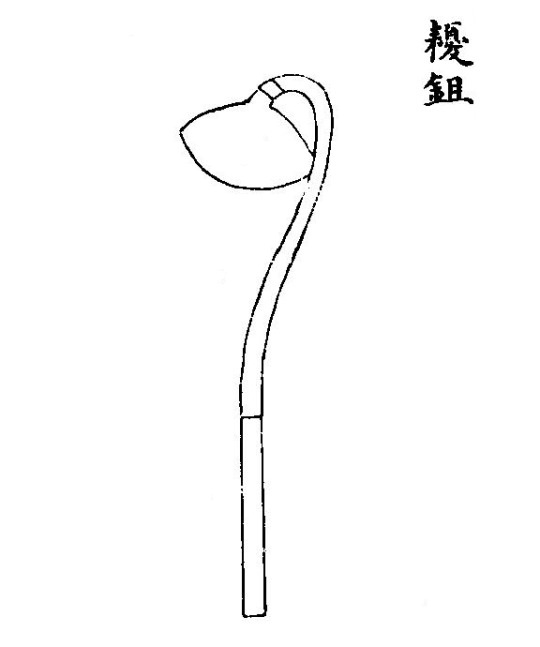
QMYS is the oldest text to refer to the iron-tine rake, tiechi loucou鐵齒𨫒楱

QMYS quite often refer to the spear-harrow, feng鋒. Wang Zhen notes that by his time it was no longer in use, his description of it as a cross between a plough and a spade may therefore not be very accurate.

The sickle, yi刈, was the main tool for reaping field crops.
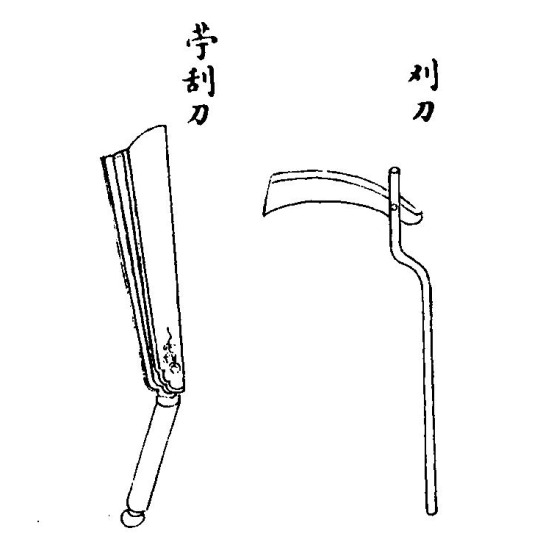
(Wang Zhen's yidao刈刀)
[Books quoted by QMYS in Section 3, in order of appearance]
The Erya爾雅 (“Approaching the Correct”) is the oldest surviving Chinese glossary. Modern scholarship dates the book to the late Warring States and/or early Western Han periods. It is quoted numerous times in QMYS. This is the second QMYS section to quote from the Erya. The last previous was Section 1 (“Tilling the Fields”).
The Shuowen 說文 (“Explaining Graphs”) by Xu Shen許慎 (c. 58 – c. 147) analyses the composition and reasoning behind the different characters. It is quoted numerous times in QMYS. This is the second QMYS section to quote from the Shuowen. The last previous was Section 1 (“Tilling the Fields”).
The Guangzhi廣志 (“Wide Treatise”) by Guo Yigong郭義恭 (Western Jin) is now lost, but it is quoted numerous times in QMYS and other books. This is the first QMYS section to quote from the Guangzhi.
Guo Pu郭璞(276 – 324) was a Daoist wizard, poet and writer. His surviving writings include the oldest extant commentary on the Erya and a commentary on the Shanhaijing. This is the first QMYS section to quote Guo Pu, from his Erya commentary.
Sun Yan孫炎 lived during Wei and was disciple of Zheng Xuan. He wrote (a now lost) commentary on the Erya where he pioneered the use of the fanqie system to indicate pronunciation. This is the first QMYS section to quote Sun Yan.
Liu Zhang 劉章(200 – 176) was a grandson of the Han founder. According to the Shiji he recited the Gengtian ge 耕田歌 (“Song of Ploughing the Fields”)at a banquet during the regency of Empress Dowager Lü, to show his opposition to the Lü clan's power, and he later became one of the main actors in their downfall.
The Guanzi管子 (“Master Guan”) is a collection of treatises on statecraft traditionally attributed to Guan Zhong管子 (d. 645 BC9), an influential minister in Qi during the Spring and Autumn era. Section 3 contains the third quote from the Guanzi in QMYS, the first two are in the preface (which I have impudently skipped).
[The original text is a mix of large and small characters. I have collected the small text sections together as indented notes within {} brackets.]
[Translation starts here]
Section 3, Growing Foxtail millet
Growing foxtail millet [gu穀]:
{“Grain” gu穀 and “foxtail millet” ji稷 are names for setaria millet [su粟]. Grain is the collective name for the Five Grains, and does not mean setaria millet. However, today people solely consider foxtail millet to be “grain”, and [I] look to the customary name for it, and that is all.}
[For the remainder, gu穀 will be translated as “foxtail millet” in the sections written by Jia Sixie, ji稷 will generally be rendered also as “foxtail millet”, and su粟 as “setaria millet” (or just “foxtail” and “setaria”).]
{The Approaching the Correctsays: “Zi粢 is foxtail millet [ji稷].”}
{The Explaining Graphs says: “Setaria millet [su粟] is the fruit of excellent grain [gu穀].”}
{Guo Yigong's Broad Treatise says: “The names of the kinds are Red Setaria and White Stem, Black-Patterned Sparrow Setaria, Duke Zhang's Mottled, Enclosed Yellow-Iron-green, Dark-green Foxtail, Snow-White Millet – likewise named White Stem, also White-Indigo Short, Bamboo Head-Stem Dark-green, White Wheat-Catching, Stone-Pulling Purest, Earth-black Dog-Paw.”}
{Guo Pu's Annotations to the Approaching the Correct says: “Today in Jiangdong they call foxtail millet zi粢.”}
{Sun Yan says: “Foxtail [ji稷] is setaria [su粟]”}
{Note that the present age's names for setaria, many uses a person's family and courtesy names as the label name. There are likewise those where look and form established the names, and likewise those where what happened to be appropriate became the designation, [I] rely on them then to set them out, and that is all:}
{Vermillion Foxtail, Highland Yellow, Liu Zhuxie, Daomin Yellow, Whittled-Grain Yellow, Sparrow's Regret Yellow, Continued Life Yellow, Hundred Days Grain, Upright Wife Yellow, Unworthy-of-Rice Grain, Slave Child Yellow, Jiazhi Foxtail, Schorced Gold Yellow, Quail's Slipper Iron-green which is also named Wheat's Floor-Fighter: These fourteen types ripen early and endure drought, early ripening avoids insects. The Whittled-Grain Yellow and Unworthy-of-Rice Grain types have a pleasing taste.}
{Now-Fell-off-the-Chariot, Short Horse-Carer, Hundred Flock Sheep, Hanging Snake Red-Tail, Bear-Tiger Yellow, Sparrow's and People's Benefit, Horse Reins, Liu Pig Red, Li Yu Yellow, Amba Grain, Donghai Yellow, Rocky lesuo䮑歲, Dark-green-Stalked Dark-green, Dark Excellent Yellow, South-of-the-Paths Crop, Nook-and-Dike Yellow, Song Ji's Idiocy, Point Out Yellow, Rabbit Foot Dark-green, Kind Sun Yellow, Shifting Wind Red, Single Sunlight Yellow, Mountain Saline, Dundang Yellow: These twenty-four types all have spikes with bristles, endure wind, and avoid harassment from sparrows. The Single Sunlight Yellow type is easy to hull.}
{Precious Pearls Yellow, Popular Gain White, Zhang Lin Yellow, White Salt Foxtail, Thousand Hooks Yellow, Zhang Yi Yellow, Gleaming Tiger Yellow, Chief Slave Red, Reed-Stalk Yellow, Xun Pig Red, Wei Shuang Yellow, White-Stalked Dark-green, Bamboo-Rooted Yellow, Attuned Mother Large-grained millet, Rock-Pile Yellow, Liu Sand-White, Seng Long-lasting Yellow, Red Large-grained Foxtail, Auspicous Swift Yellow, Otter-Tail Dark-green, Continued Potency Yellow, Concave-Straw Yellow, Sun Long-lasting Yellow, Pig-Shit Dark-green, Smoking Yellow, Happy Slave-girl Dark-green, Level Long-life Yellow, Deer Stubble White, Salt for Breaking Baskets, Yellow dianshan, Hilly Place Yellow, Red Ba Large-grained millet, Deer Hoof Yellow, Famished Dog Iron-green, Can-be-Pitied Yellow, Hulled Foxtail, Deer Stubble Dark-green, Aluoluo: These thirty-eight types are the single stems great foxtails? [the received QMYS text is defective at this point]. The White Salt Foxtail and Attuned Mother Large-grained millet types have a pleasing taste. The three Concave-Straw Yellow, Hilly Place Yellow and Pig-Shit Dark-green types are bad tasting. The Yellow dianshan and Happy Slave-girl Dark-green types are easy to hull.}
{Bamboo-Leaf Dark-green and Rocky Yichu, Bamboo-Leaf Dark-green is also named Hu Foxtail, Water Black Foxtail, Swift Mud Dark-green, Charging Heaven Cudgels, Pheasant Chick Dark-green, Owl-Foot Foxtail, Goose-Head Dark-green, Hold-Piles Yellow, Dark-green Hawk-cuckoo: These ten types ripen late and endure floods. If there is a calamity of insects, they are consumed.}
In general there is foxtail which is fully ripened early or late, which sprouts and straw are tall or low, which harvest results are large or small, which natural quality is strong or weak, which hulled grain taste good or bad, which grain results in gains or losses{A}. The conditions of the land can be good or poor{B}, and mountains and marshes differ in what is suitable{C}. Obey Heaven's seasons, and evaluate the land's advantages, then [you] will employ little strength yet achieve success many times. Rely on feelings and go against the Way, [you] will toil and yet get nothing.{D}
{A: Those that ripen early have short sprouts and the harvest is large. Those that ripen late have long sprouts and the harvest is small. Those which strong sprouts are short, and belong to the yellow foxtail. Those which weak sprouts are long, and are dark-green, white, or black. Those with small harvests are good but make losses. Those with large harvests are bad but make gains.}
{B: Good fields are suitable for late types, poor fields are suitable for early types. Good land is not solely suitable for late types, early types are also not harmful. Poor land is suitable for early types, late types will certainly not give successful result.}
{C: For mountain fields, types with strong sprouts, to avoid wind and frost. For marsh fields, types with weak sprouts, to aspire to splendid results.}
{D: Enter a spring to chop wood and climb a mountain to look for fish, and the hand will surely be empty. To face the wind when sprinkling water, or to go against the slope when moving a pellet, these conditions are difficult.}
In general for foxtail fields, mung beans or adzuki beans as the previous crop is the best; hemp, broomcorn millet, and sesame are next; turnip and soy beans are last.
{It is common to see gourds as the previous crop, they are no less than mung beans. Originally they were not discussed, for the moment then keep it in mind.} [This note may be a later addition.]
For 1 mu of good land, use 5 sheng of seeds, and for poor land 3 sheng.{A} Foxtail fields certainly must be changed annually.{B} Those sown in the 2nd Month or the 3rd Month are the early-planted grain. Those sown in the 4th or 5th Month are the late-planted grain. From 2nd Month, First Ten-day, until the hemp and beiyang willow sprout seeds is the best time. 3rd Month, First Ten-day, until the Pure and Clear [qingming] Period and the peach tree first flower is the middle time. 4th Month, First Ten-day until the jujube leaves sprout and the mulberry flowers fall is the worst time. For those which the yearly Way ought to be late, the beginning of the Fifth Month or Sixth Month are also possible.
{A: This is for early-planted foxtail, for late fields increase the number of plants.}
{B: If twice sowing the seeds, the weeds will be many, and the harvest poor.}
In general spring sowing wish to be deep, and ought to be dragged with a heavy “beater”. Summer spring wish to be shallow, and just sprout from itself.
{Spring air is cold, and sprouting is slow. If not dragged with a “beater”, they will set root in hollows, and even if they sprout, they will immediately die. Summer air is hot, and they sprout quickly. [If] dragged with the “beater” and there happens to be rain, [the ground] will surely be hard and dry. Those in the spring that are very moist sometimes also are not necessary to beat. To be certain they want beating, [you] ought necessarily to wait for [the ground] to turn white. Wet beating will cause the ground to be hard and tough is the reason.}
In general when sowing foxtail, after rain is good. If there is a little rain, [you] ought accept the wetness and sow. If there is great rain, wait for the weeds to sprout.{A} During spring, if there is drought, on the land of the autumn tilling [you] might open the mounds and wait for rain.{B} During summer, if there are open mounds, not only will it sweep away and wash out that which does not grow, [but] in addition it and the grassy weeds will set forth together.
{A: [If] there is a little rain and [you] do not accept the wetness, there is nothing to give birth to the stalks sprouting. [If] there is great rain and [you] do not wait for [the ground] to turn white, wet rolling then will cause the sprouts to be frail. If weeds are abundant, to first hoe one time everywhere and afterwards accept sowing then will be good.}
{B: On the spring-tilled, it does not hit the mark.}
In general the fields that want early or late are mixed together.{A} In years that are intercalary, after the solar periods draw close, [you] ought to have late fields. However for the most part [you] want early, early fields yield more than late.{B}
{A: Prepare for what is proper in the Way of the year.}
{B: Early fields are clean and easy to manage. The late ones overgrow with weeds and are difficult to manage. Their harvest, regardless of large or small, follows from is proper for the year, and is not connected to early or late. However, early foxtail have thin husks, the hulled grains are solid and many. Late foxtail have thick husks, the hulled grain are small and empty.}
When the sprouts have grown similar to horse ears, then arrowhead hoe.{A} At places with gaps and holes, hoe and patch them.{B} In general for the Five Grains, only the small hoe is good.{C} For good fields, usually for each chi [foot], keep one hole.{D} For poor land, seek out mounds and tread on them.{E}
{A: The proverb says: “Want to get foxtail, at horse ears the arrowhead.” }
{B: The work done might not be overstated. The profit gained this way is a hundred times.}
{C: The small hoe not only saves strength, the grain is also twice as good. With a large hoe, the grass and their roots will be profuse and thick, a lot of work will be done yet the harvest will grow smaller.}
{D: Liu Zhang's Song of Tilling the Fields says: “Plough deeply and sow thickly, the standing sprouts want to be spread out. For those not of their kind, hoe and get rid of them. The proverb which states: “[When you can] turn around the chariot and reverse the horse, [or] throw away the clothes [and they] do not fall down, both give ten shi when harvested” tells that harvest for [fields that are] very sparse or very thick are all equal and even.}
{E: Not tilling is the reason.}
When the sprouts spring forth from the mounds, hoe deeply. When hoeing, do not get bored with the frequency. Once done, start again. [You] must not stop though there is no grass.{A} Spring hoeing is to lift up the earth, and summer to remove grass. For that reason, spring hoeing is not done when facing wetness. By the 6th Month and after, even if wet, in this case is not disliked.{B}
{A: Hoe not just to remove the grass, then the land will ripen and the fruit will be many, the chaff will be weak, and the hulled grain will grow. When hoeing is done ten times everywhere, [you] will then obtain “Eight [parts of ten?] Hulled grain”.}
{B: During spring, as the sprouts are just then slight and their shade are not yet covering the ground, if wet hoeing, the ground will become hard. During summer, the sprouts cast a solid shade and the ground does not see the sun. For that reason, even if wet, in this case there is no harm. Master Guan says: “To make a state, cause the farmers to till when cold and weed [yun芸] when hot.” To weed is to remove grass.}
When the sprouts have sprung from the mounds, each time [you] have gone through rain, in the time [the ground] turns white, immediately use the iron-tine rake across and athwart to rake and harrow them.
{Method for raking: Make a person sit down on top, and frequently use their hands to tear off and get rid of grass, if grass block up the tines it will harm the sprouts. Like this [you] will make the ground ripe and soft, easy to hoe and save strength. When hitting the spear-harrow, stop.}
When the sprouts are one chi high, spear-harrow them.{A} Tillage is not about not embedding the root sprouts deeply, it kills the grass and increase the results, however it will make the ground hard and tough, lacking in moisture and difficult to till. Hoe five times everywhere or more, and it will not be bothersome to till.{B}
{A: Three times everywhere is always good.}
{B: When for sure [you] want to till, after you have reaped the foxtail, if you promptly spear-harrow below the roots to burst them up, it will be soft and moist, and easy to till.}
In general when sowing, [you] want the ox to move slow and leisurely. The sower makes hurried steps to tread the mound base with his feet.
{If the ox is slow, the seeds will be evenly placed. If trod with the feet, the sprouts will thrive. When the footsteps connect with each other, it is possible to not bother with beating.}
When ripe, reap quickly. When dry, store quickly.
{If reaped early, the sickle-use will be excessive. If reaped late, the spikes will break. If there is wind, the harvest will diminish. If stored wet, the stalks will rot. If stored late, there is loss and waste. If continuous rain, they will grow ears.}
In general for the Five Grains, for the most part those sown in the first ten-day will give a full harvest, those in the middle ten-day a middle harvest, and those in the last ten-day a lesser harvest.
7 notes
·
View notes
Text
Here we go, fibre haul! You guys ready?

So all of these lovely bits of floof were purchased from The Fiber Imp.

The owner is so nice, I thought I'd give them a little shout out so you guys can buy any floof you like the look of here:
Most of the nerdy stuff I am sourcing my info from is a site called NWyarns.com which has great indepth info in the histories of many breeds of sheep and how they became the sheep we have today.
If I grab info from another website then I'll mention it specifically but otherwise this all comes from NWyarns.
Now let's dig in shall we?
First up, we have Rocky Mountain Skies


This one is commercially dyed and all 100% merino.
Domesticated in Mesopotamia sometime between 11,000 and 9,000 BCE
If you were not select royalty you were pretty much out of luck – there were no legitimate ways for the average sheep farmer to get a prized Merino ram or ewe until about the first decade into the 1800s. However, there were certainly illegitimate ways. Paying someone to smuggle Merino sheep out of Spain offered the chance of a prized ram or ewe. Certainly that is how the U.K. acquired their first Merino sheep (4 rams and 2 ewes), which Sir Robert Banks paid some enterprising business person to smuggle out of Spain via Portugal.
However, more often than not, it appears that the people purchasing Merinos through less than legitimate means during this time frame were either getting scammed or simply provided with any Spanish sheep that smugglers could manage to get out of Spain.
Merino is renowned for its fineness and elasticity, which can be made into woven, knitted, crocheted or felted wool fabrics that can be very comfortably worn directly against the skin. Merino is graded to a variety of micron widths including Superfine (17.6-18.5 microns), Fine or Extrafine (18.6-19.5 microns), Fine Medium (19.6-20.5 microns) and Medium (20.6-22.5 microns). Unless otherwise specified, you will find that most merino available in commercial clothing and most yarns is in the Fine Medium to Medium range. However, even though the Fine Medium and Medium Merino is the most common, it is by no means coarse! 22.5 microns is still quite fine, and extremely comfortable to wear directly against your skin.
Next up is Spellbound


75% 18.5 Micron Merino / 25% Mulberry Silk
This next bit of info comes from Casper.com:
Mulberry silk comes from the Morus Alba tree.
Originating in China over 5,000 years ago, “sericulture” is the ancient process of spinning silk.
Mulberry silk is made from the cocoon of the Bombyx mori moth. Before metamorphosis, the caterpillar feeds exclusively on the white mulberry leaf.
Smoother and stronger than any other silk in the world, mulberry silk is a textile powerhouse. Famous for its durability and lightweight quality, mulberry silk is able to retain up to a third of its weight in moisture. Because of this, it doesn’t emit a smell when damp and doesn’t need to be left out to dry for a long amount of time, making it relatively easy to manage.
Au Naturel


Undyed blend of superfine merino, dark brown alpaca, mulberry silk and baby camel.
Alpaca:
Alpacas are in the camelid family -- the same biological family as camels and llamas.
Although they can be found around the world today, alpacas originated in the Andes mountain range of South America. They are descended from vicuña, a wild camelid native to South America, in the Andes mountain range. The domestication of the alpaca for fiber and meat began up to 6000 years ago, with the people who lived in the Andes.
Alpaca hairs are hollow, making it a go-to fiber for crafters and manufacturers who are looking for softness with superior insulating properties. It is also surprisingly strong for such a soft, fluffy fiber.
Alpaca fiber comes in various qualities, ranging from fibers nearly as soft and luxurious as cashmere to lower quality fibers with a similar texture to fine wool. Most yarn and spinning fiber available relies on the high quality, fine alpaca. It is more difficult to find coarser alpaca, as there is little demand for it in North America. Alpaca is also hypoallergenic, making it very popular for people with skin sensitivities.
This next bit is from SpinoffMagazine regarding the Bactrian camel:
Bactrian camels have two humps and are found primarily in Mongolia and China.
Bactrians are the source for the soft down we associate with fine camel hair garments. Their fiber naturally sheds and can be combed away or gathered as it falls.
While the website for the Cashmere and Camel Hair Manufacturers states that Bactrian camels produce as much as 17 to 22 pounds of fiber annually, other sources cite amounts as low as 5 pounds. The higher amounts probably include both hair and down.
The outer coat and mane hair is long (12 inches or more) and coarse. It protects the animal from the elements, shedding dirt and water. The fine undercoat is much shorter, averaging 1 to 5 inches long, although it usually measures less than 3 inches in length. Some of the fiber shortness in commercial camel preparations may result from the dehairing process. The micron counts (fiber diameter) for camel fiber have a huge range. While the down averages 20 to 23 microns (similar to Merino wool), it can be as fine as the finest cashmere.
Samples from some United States Bactrian camel hair that had all the outer coat fibers removed ranged from 6 to 120 microns, with most of the sample measuring 18 to 19 microns. Camel hair has some crimp and a small amount of elasticity.
When working with the fiber in batt form (a cloud of carded fiber), I simply peel off thin layers of fiber.
Rovings (strands of carded fiber with a small amount of twist) and top (strands of long fibers in parallel arrangement) require no further preparation although they are sometimes easier to spin when split into narrower strips.
Because the camel fiber is short, thin strands of roving or top will probably drift apart if you try to predraft. You can also prepare for a lightweight yarn by handcarding the down fiber from any form into rolags.
This next bit of fibre is what pulled me into the shop in the first place, Dragon's Breath

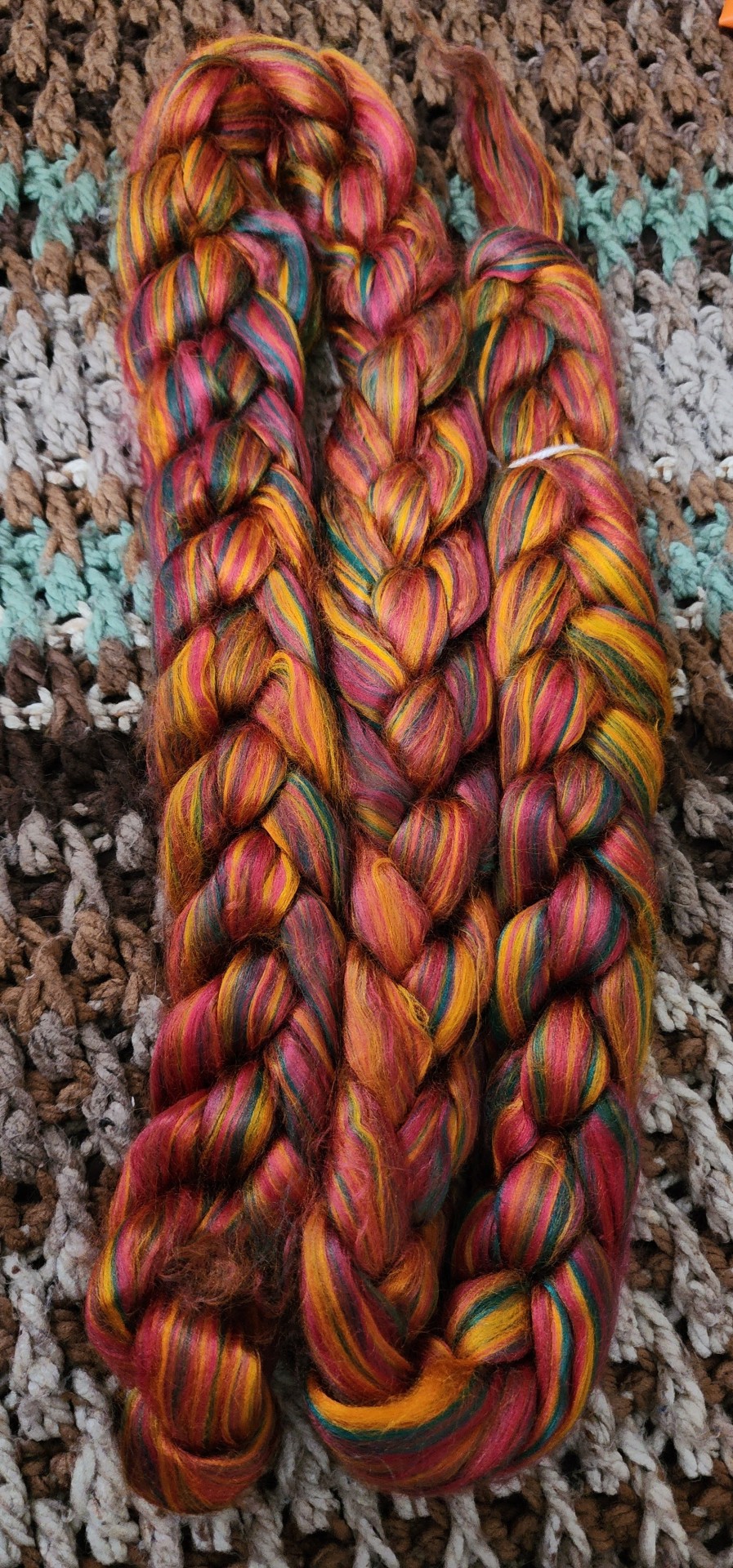
Bamboo:
In the late 19th century, the first semi-synthetic fiber in history was invented – viscose rayon! Known as artificial silk until its rebranding as rayon in 1924, rayon has become a significant part of our fiber landscape.
In the yarn and fiber world, we most frequently run into rayon when it is labeled as bamboo or viscose.
More recently, you can also buy viscose rayon labeled as rose fiber (having been sourced from the cellulose of rose bushes), or even purchase viscose rayon fiber that comes from seaweed.
While these fibers are often advertised as eco-friendly because they come from plants, that is not necessarily the case.
It has had a history of adverse health effects on the workers involved in its manufacture right up to the present day.
A short and somewhat abbreviated version of viscose rayon production goes something like this.
All rayon begins with pure cellulose. This cellulose is treated with a caustic soda, and goes through a number of curing processes and chemical treatments, including a process called Xanthanation in which it is mixed with carbon disulfide. The resulting material is dried and ground into a powder, and is dissolved in yet another caustic solution to form the viscose, the viscous solution from which viscose rayon receives its name. Allowed to stand for a period of time, the viscose solution is strained and then extruded through spinnerets, which land in a bath of sulfuric acid, forming rayon fiber. The fiber is then washed to remove any residual chemicals and make it safe for the wearer.
By the time rayon fiber and fabric hits the market, there are no traces of any chemicals that could harm the person wearing it. The same can’t necessarily be said for the factory workers, either in the past or today.
They go into more detail if you want to dig in further but I will need to research more myself before I commit to further bamboo purchases.
I will continue this in part 2!
#long post#wool#alpaca#camel#bamboo#fibre#show and tell#fiber#hand spinning#yarn#craftblr#part 1#haul
23 notes
·
View notes
Text

⭐️ new from saie !!
$25.00 USD
12 ml / .4 oz
6 shades at launch
Sephora tags: clean + planet aware, liquid formula, natural finish, vegan, fragrance free, without silicones.
“A lightweight, buildable liquid-cream bronzer that blends seamlessly into skin for a subtly defined bronze with a dewy, soft-focus finish.”
🌙✨ ingredient list (at launch) -
Isocetyl Stearoyl Stearate, Glycerin, Tribehenin, Glyceryl Stearate, Silica, Aqua/Water/Eau, Sambucus Nigra, Fruit Extract, Glycyrrhiza Glabra (Licorice) Root Extract, Morus Alba Leaf Extract, Symphytum Officinale Leaf Extract, Oenothera Biennis (Evening Primrose) Root Extract, Mica, Tin Oxide, Titanium Dioxide (CI 77891), Iron Oxides (CI 77491, CI 77492, CI 77499).
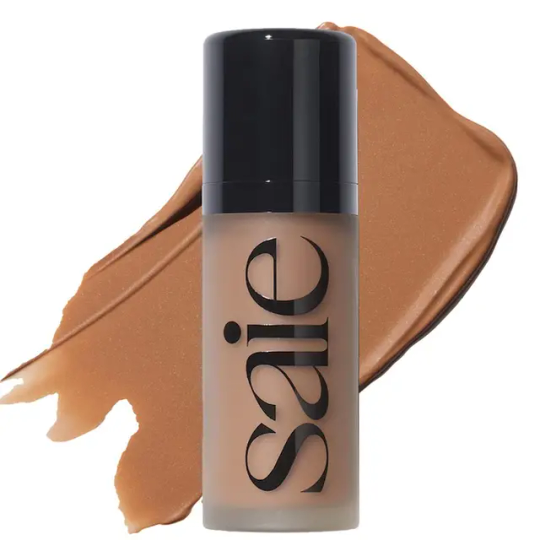


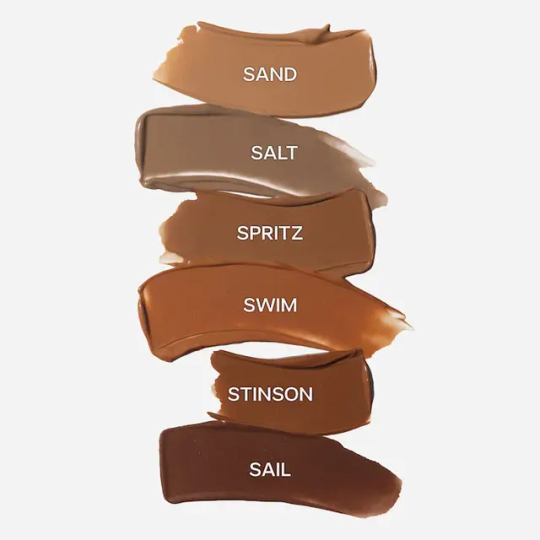




#New makeup#makeup#makeup news#Coquette#dark coquette#Girlblogger#girlblog#this is a girlblog#Beauty#cosmetics#bronzer#Liquid bronzer#🤍 lifestyle tag#📁 filed under makeup#Saie
3 notes
·
View notes
Text


Review of NACIFIC's Phyto Niacin Whitening Essence
NACIFIC is a Korean brand that uses only the best natural ingredients. Their Phyto Niacin Whitening Essence is designed to moisturize the skin and reduce pigmentation, it's formulated to brighten dull skin for a flawless complexion. Key ingredients include: 5% of niacinamide (whitening, lightening, anti-aging, rejuvenating, anti-wrinkle), bamboo extract (soothing, adds vitality, anti-inflammatory, removes dry skin, antioxidant, healing, hydrating), lemon fruit extract (skin clearing, brightening, lightening, anti-inflammatory, improves skin health), sodium hyaluronate (anti-aging, anti-wrinkle, hydrating, moisturizing, healing), white mulberry bark extract (antioxidant, anti-irritation, evens skin tone, whitening), edelweiss extract (anti-aging, anti-inflammatory, antibacterial, antioxidant, calming), and wormwood extract (healing, antibacterial, anti-fungal, skin protective, soothing, anti-inflammatory, anti-redness, adds radiance to the skin). This essence retails for between $12-18 USD, you can get it here for $12.80 + shipping.
Ingredients
Bambusa Vulgaris (Bamboo) Extract, Butylene Glycol, Glycerin, Niacinamide (5%), 1,2-Hexanediol, Pentylene Glycol, Caprylyl Glycol, Acrylates/C10-30 Alkyl Acrylate Crosspolymer, Sodium Hyaluronate, Disodium EDTA, Water, Potassium Hydroxide, Rosa Canina (Rosehip) Fruit Extract, Alcohol, Morus Alba (White Mulberry) Bark Extract, Leontopodium Alpinum (Edelweiss) Extract, Ethyl Ascorbyl Ether, Gentiana Lutea Root Extract, Artemisia Absinthium (Wormwood) Extract, Arnica Montana Flower Extract, Achillea Millefolium (Yarrow) Extract, Propylene Glycol, Citric Acid, Citrus Limon (Lemon) Fruit Extract, Potassium Sorbate, Nelumbo Nucifera (Sacred Lotus) Extract, Sodium Benzoate
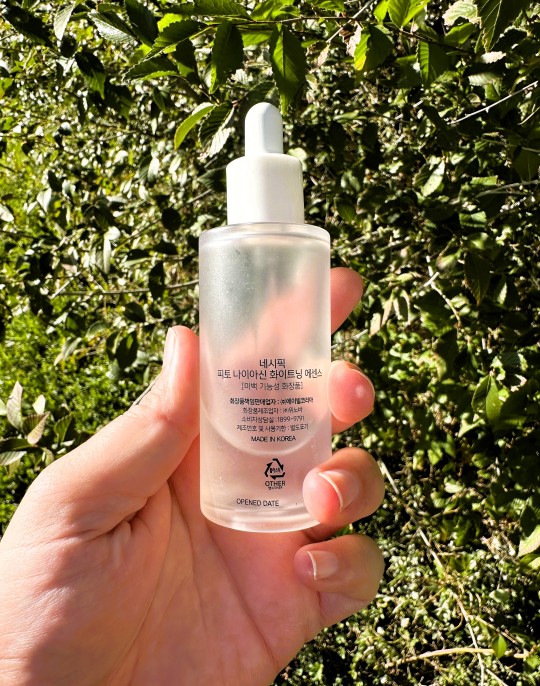
This essence contains 50 ml (1.69 oz) and is fragrance-free. It comes in a sturdy plastic bottle with a dropper.
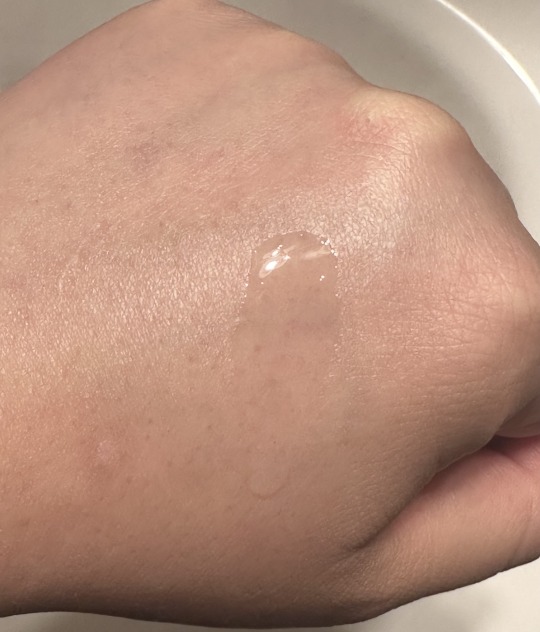
The essence is very watery and clear.

It's very lightweight and hydrating.

It leaves skin looking more dewy and brighter.
Recommended use is after washing your face and toning, lightly shake the essence and apply it with your fingertips along your skin texture. Cover your face with your palms and press down for better absorption. After using, this essence is really impressive to me. It doesn't have any fragrance, but it does contain a couple of irritants, this also might not work with very very sensitive skin as it has active niacinamide and lemon extract, I do notice that it can burn if you have any broken skin or skin that's been picked at. The essence spreads very well and helps to plump and hydrate skin and you will notice a subtle brightening of the skin as well after each use. It helps to tone redness and even skin tone, it helps to refresh dull and dry skin. The ingredients are very hydrating as well as nourishing to the skin. The texture of the essence is really watery and lightweight, so this would be great for any skin type. It's also not sticky or tacky at all. I feel like this is actually pretty gentle despite having some irritants and actives so I'd recommend this to pretty much anyone unless you have issues with niacinamide.
What I like: this essence is really lightweight, it absorbs quickly and layers perfectly well under other skincare. It's almost instantly subtly brightening and it's very hydrating without being tacky or sticky. The ingredients are really good and this is relatively gentle and would probably suit most skin types. What I don't like: this does sting on open wounds or cuts and it does have some irritants.
Pros:
Hydrating
Nourishing
Refreshing
Brightening
Tones redness
Nice ingredients
Pretty gentle
Fragrance-free
Cons:
Can sting on open wounds
Can be irritating
Would I buy again?
Yes
Rating: 9/10
5 notes
·
View notes
Photo

Cada 6 de septiembre se homenajea a una de las especies de aves más peculiares del mundo. Se celebra el Día Mundial de las Aves Playeras.
¿Por qué se celebra el Día Mundial de las Aves Playeras?
La principal finalidad de la celebración del Día Mundial de las Aves Playeras es la de promover la investigación y monitoreo de estas especies, así como destacar la importancia de su conservación a nivel mundial.
Es preciso proteger su hábitat y las rutas migratorias de estas aves, debido a que en las últimas décadas han mermado las poblaciones de aves playeras. De esta manera se garantiza la preservación de las distintas especies.
Las aves playeras: viajeras peculiares
Las aves playeras son aves acuáticas y migratorias del orden Charadriiformes que se encuentran en dunas, playas de arena, humedales costeros e interiores, pastizales y otros hábitats. Algunos de estos espacios se han visto afectados por los siguientes factores:
Contaminación ambiental.
Afluencia vehicular en zonas de nidificación.
Actividades recreativas.
Acecho de animales a sus nidos.

Las aves playeras se caracterizan por recorrer grandes distancias, provenientes de varias partes del mundo. Generalmente realizan dos movimientos migratorios anuales: en otoño hacia el sur para llegar a sus áreas de invernada y hacia el norte en primavera para la temporada reproductora.
Se estima la existencia de unas 217 especies de aves migratorias y residentes. Son uno de los grupos de aves más variados en forma y tamaño. Funcionan como indicadores de cambios ambientales.
Algunas de las características físicas de estas aves son las siguientes:
Dedos largos, que le otorgan estabilidad y equilibrio sobre sustratos blandos.
Patas largas y delgadas, para caminar en la arena, el lodo y en aguas poco profundas.
Picos alargados, para buscar alimento en el lodo y en el agua.
Plumaje moteado, que les permite camuflajearse y esconderse de depredadores. Con largas plumas primarias para volar a gran velocidad.
De acuerdo a cada especie de ave playera, se reproducen y nidifican en ciertas épocas del año. La mayoría de estas especies tienen hábitats alejados de las costas playeras. Muchas de ellas son aves migratorias de larga distancia.
Algunas especies de aves playeras
A continuación mencionamos algunas de las especies más conocidas de aves playeras:
Playero Canuto (calidris canutus)
Playero semipalmeado (calidris pusilla)
Ostrero americano (haematopus palliatus)
Playero rojizo (calidris canutus roselaari)
Playero Blanco (calidris alba)
Gaviota común (larus canus)
Gaviota del Pacífico (larus pacificus)
Alcatraz común (morus bassanus)
¿Cuál es tu ave playera favorita? Comparte información útil e interesante sobre el Día Mundial de las Aves Playeras en las redes sociales. Utiliza los hashtags #DíaMundialAvesPlayeras #AvesPlayeras #WorldShoreBirdsDay
3 notes
·
View notes
Text
White Mulberry: A Pillar of Indian Sericulture
Silk’s origin: Mulberry leaves, silkworms thrive. #tranzitnotes
In the ancient art of sericulture, the white mulberry tree stands as a silent yet essential partner in the journey from silkworm to silk. Indigenous to China, Morus alba found its way to the Indian subcontinent, where it became intricately woven into the fabric of silk production.
Historical Roots
The history of sericulture in India dates back thousands of years, with mentions of silk…
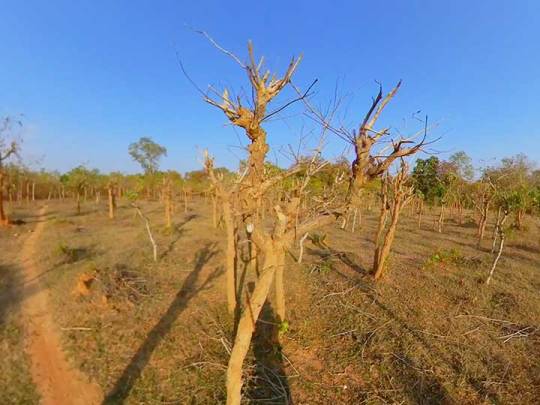
View On WordPress
0 notes
Link
0 notes
Text
Chinese philosophy doesn’t have the letters of salvation: differs from general religion (Essay)

Seimin Yojyutsu (Qimin Yaoshu)
I have recently noticed books such as "Lao Tzu", "Zhuang Zhou”, "I Ching", and "The book:書経" that have been passed down since ancient times in China, That is, the concept of "salvation" in Chinese philosophy is endlessly scarce or absent.
In the case of general religions, the three major religions in the world ... In Christianity, Islam, and Buddhism, the concept of "salvation" is indispensable. No, without this, believers cannot safely enter into a religious life. Without a voice saying, "Please save me who is sinful and tainted," religion cannot be established.
With that in mind, I googled for the keyword "Is there the word salvation in Chinese philosophy?" Then, a hit page was displayed, which was the word "Keisei Saimin" or "Keikoku Saimin". The meaning is "run the world and help the people." It shows the purpose of so-called "economy", or more specifically, "politics". It certainly has the meaning of "salvation," but it has a very different nuance from religious "salvation." There is no assumption of a god and buddha to rescue, even if the politician assumes it.
@@@@@@@@@@@@@@@@@@@@@@@
In the inner part of "Baopuzi" written by Ge Hong in Eastern Jin, China, the word "Making the world folklore" appears and is used almost synonymously with the Making the world people. The era went down a little, and in the Sui dynasty's Wang Tong "Bunchuko" Rei-raku Hen, there was "Economics of the economy, so-called economic people", and "economics" was used as an abbreviation for the people of the economy. I understand. In addition, "economy" appears in later generations such as "Shinsho" Yin Koden (Tang) and "Song History" Wang Anshi Denron (former), but of course the above is a usage that means politics, governance, and administration in general. After the political change of Bojyutsu and Hundred Days' Reform, the new subject "Economic Special Course", which was newly established to appoint talented human resources in the field who are scholarly and scholarly, is also based on this usage. ..
@@@@@@@@@@@@@@@@@@@@@
Wiki (Keisei Saimin)
That was the source of this word. It is surprising that it first appeared in a book called " Hobokushi", which looks like a child of Taoism and Confucian. By the way, traditionally, there are technical books that enrich the people in China. I would like to introduce one of them, a book called "Seimin Yojutsu(The important technics to enrich people)" (wiki). "Qimin Yaoshu" in Chinese.
@@@@@@@@@@@@@@@@@@@@@@
"Qimin Yaoshu" (Traditional Chinese: Qimin Yaoshu; Simplified Chinese: Qimin Yaoshu) is about agriculture, livestock, clothing, food and housing technology in North China written by Jia Sixie of Northern Wei, China. Comprehensive agricultural book. 92 volumes, 10 volumes in total. It was established around 532 to 549. It is the earliest agricultural book in the history of world agriculture and the oldest and most complete agricultural book in existence in China.
In the first half of the 6th century, Jia Sixie was a person from Shandong Province (currently Shouguang City, Shandong Province), and was a literary man who served as a Taishou in Koyo County (currently Zibo City, Shandong Province) in the Northern Wei Dynasty.
It is said to be the culmination of agricultural books up to Northern Wei, and contains many lost literary works of old agricultural books such as "Fan Shengzhi" and "Shimintsuki Ordinance". It consists of 10 volumes, and the description covers from cultivation methods such as main grains, vegetables, fruit trees, and morus alba to livestock-related, brewing methods such as koji, sake, soy sauce, vinegar, and dried dairy, food processing methods, and foreign product theory. .. It is systematic, rigorous and detailed. It had a great influence on the development of ancient Chinese agriculture. It is an indispensable document in the history of Chinese cuisine. It is said that the miscellaneous part has a later addition.
During the Northern Wei era, the northern limit of farming and livestock farming shifted to the south in the face of the cold medieval period, and after the migration of Gangnam immigrants to North China due to the armed refugees of farmers in North China and the migration of pastoralists such as the Mongolian Plateau to North China, the Five Barbarians from the end of Han It is a stable period of political economy in North China after the war until the Sixteen Kingdoms era. Therefore, in addition to the tradition of the agricultural society of North China up to the Han Dynasty, the technology and food culture of the pastoral society in the north were transferred on a large scale. In this way, there are many descriptions with a strong pastoral color, such as various dairy product manufacturing methods that are very similar to the dairy product processing technology in Mongolia today.
@@@@@@@@@@@@@@@@@@@@
···I feel like this. This is a purely technical book, not a book with religious "salvation". Regarding Chinese philosophy, I think this concept of "salvation" is sparse. "Shokyo" (The Book) is a collection of episodes about the rule of politicians and alternatives, but it only talks about politics, and there are no fragments of religion. It is said that the Chinese originally liked politics, but their characteristics are different among the four major civilizations in the world. Is there a myth in Egyptian civilization, Mesopotamian civilization, and Indus valley civilization? It seems that it is not in the Yellow River civilization. In the case of China, the first emperor: Fuxi (伏羲)and his wife: Joka(女媧) were human-faced snakes, and the next emperor was a ox-faced man called Shennong(神農). There will be people who are face-to-face or strange, but even though they are strange and talented, they are just emperors, not gods. This area seems to be thorough.
Many of you may have wondered in the description so far, but isn't "Confucianism, Taoism" a religion? "When. These are certainly real religions, and perhaps (if not) there is a beneficial "salvation" in this world. However, I am the one who distinguishes between "philosophy" and "religion." I think it is the religion that is now that the original pure thoughts have been transformed into dirty teachings by folk customs.
A word of the day: From a Chinese perspective, the concept of "heaven and earth" is also important. These two words are often awe-inspiring and very close to "God," but Lao Tzu says: "Heaven and earth are not human." That is, "Neither heaven nor earth is human-friendly." Chapter 5) and. Again, I can see that Chinese philosophy lacks the concept of salvation.
#Chinese philosophy#salvation#Seimin Yojyutsu#Qimin Yaoshu#Lao Tzu#Zhuang Zhou#I Ching#The book#religion#ecomomy#politics#complete agricultural book in existence in China#Confucianism#Taoism#essay#rei morishita
8 notes
·
View notes
